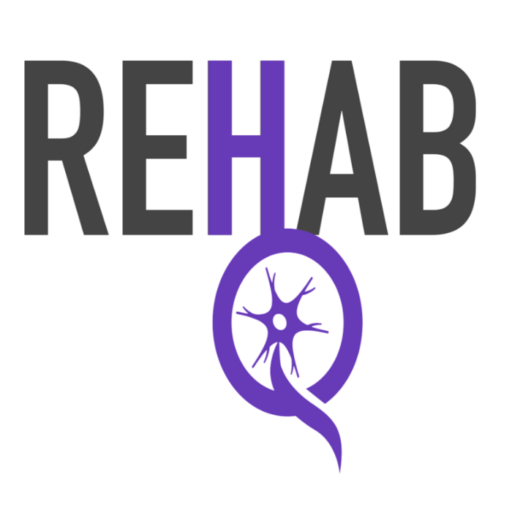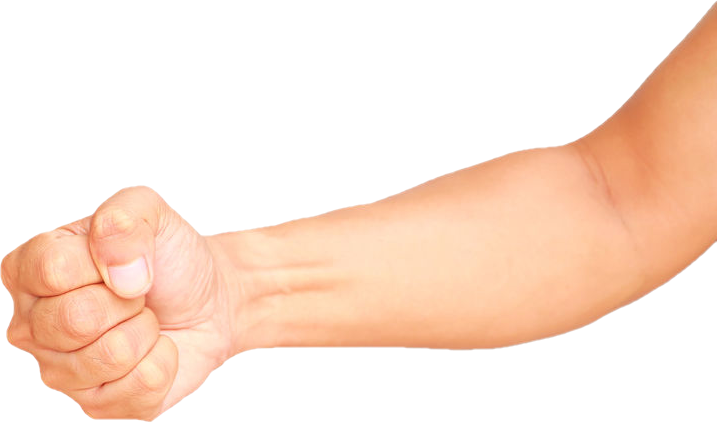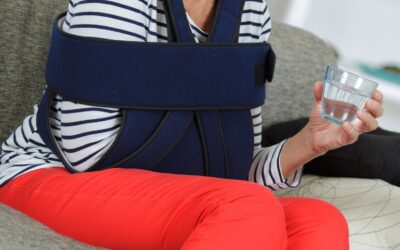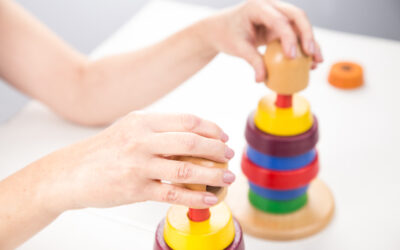A stroke can cause a wide range of problems in the arm. One of the major causes of disability after a stroke is a clenched hand. The most common cause for a clenched fist is spasticity. If left “unmanaged”, spasticity creates muscle shortening which will result in several long term problems.
What causes a clenched hand after a stroke?
A clenched hand is typically caused by overactive muscles in the hand, wrist, and forearm. This is often referred to as spasticity. Spasticity is an involuntary muscle contraction that occurs due to damage to the brain or spinal cord. When a spasm is triggered, the muscles will contract or shorten. This will pull the hand into a fist. Once the spasm “relaxes”, the muscle and tendon will lengthen (relax) and the hand will open.
Spasticity is not the only reason why the hand and wrist might ball up after a stroke. Other reasons why a hand may remain in a fist is due to prolonged non-use. Lack of movement creates somewhat of a disconnect between the brain and the body. When the muscles lose connection with the brain, they go a little hay-wire. Visualize a kindergarten class without a teacher. Yup. Chaos. The muscle is someone similar when it loses that connection with the brain. This will cause them to contract sporadically.
Another reason the hand might stay in a fist is non-compliance with the rehabilitation program. When spasticity is left unmanaged, muscle contractures will develop. Muscle contractures are when the muscle adaptively shortens and is a direct result of not adhering to the treatment program. Adaptive shortening means that the muscles and tendons have lost the necessary “lengthening” capability to allow the fingers and wrist to straighten. In other words, unlike spasticity, where the muscle has the capability to lengthen, a contracture means the muscle has lost the ability to lengthen.
What is the best treatment for a clenched hand after a stroke?
The goal for treatment is to manage the spasticity and prevent muscle contractures. This is accomplished through a combination of interventions.
Stretching
Stretch, stretch, stretch. I can not stress this enough. Spasticity that is left untreated WILL turn into contractures. The main culprits for spasticity in the hand are the muscles the forearm pronators, wrist flexors, finger flexors, and thumb flexors and adductors. All of these muscles need to be lengthened daily.
Active Exercises
Active movement is the best way to minimize the “strength” of the involuntary contraction caused by the spasticity. The best way to accomplish this is to do what we call active hand movement. Here is a video where I go into great detail on how to perform active hand exercises after a stroke.
Weightbearing
There is some literature that suggests weightbearing on the arm also helps to minimize spasticity. Here is a video explaining this.
Botox
Botox, or botulin toxin type A, is a temporary muscle relaxer that is injected directly into the nerve that controls the “spastic” muscle. This treatment is temporary and only lasts about 3 months.
Splinting
Splinting is basically a way to keep the hand open for prolonged periods. This does two things. One, it will prevent contractures. Secondly, it is a way of “retraining the brain” to keep the hand open (prevent the involuntary contraction).
Relaxing Clenched Hands after a Stroke
When performing the stretching and active movement, it is critical to get the hand muscles as relaxed as possible. In other words, minimize the opportunities to “trigger a spasm”. This will give you the best possible outcome. Physical and emotional stress are known to increase the severity of a spasm and make it hard to perform the stretches. That being said, you will want to try and perform these exercises at a time when you are the most relaxed. In addtion to emotional stress, external stimuli will also increase the likelihood of an involuntary muscle contraction. Therefore, try and find a place that is free of loud noise, and bright lights.
Other Articles You May Be Interested In:
Does Constraint Induced Movement Therapy Improve Arm Recovery?
Hemiplegia (weakness on one side of the body) can be a huge cause of disability following a stroke. This can make activities such as grasping, reaching, and manipulating objects difficult, if not impossible. Constraint Induced Movement Therapy has been well...
Does Mirror Therapy Improve Arm Function?
Mirror therapy (MT) is one of several effective treatments used to regain arm movement after a stroke. Mirror Therapy Background MT was originally designed to treat phantom limb pain with amputees. The way it worked was that it gave the person the sensation that they...



